So, you’ve seen the mainstream mid-size SUV players, and you’re looking for something… a little different.
Maybe you’re even looking for something with some off-road ability, and that’s maybe caused you to steer away from segment heavyweights like the Hyundai Tucson, Toyota RAV4, or Mazda CX-5.
Am I right so far? Maybe you’re just curious to find out what one of Jeep’s main models offers in 2020. Either way, I spent a week in this top-spec Trailhawk to find out if it’s the semi-off-roader it looks to be, or if it stands a chance against the mainstream players.
Jeep Cherokee 2020: Trailhawk (4x4)
| Engine Type | V6, 3.2L |
|---|---|
| Fuel Type | Unleaded Petrol |
| Fuel Efficiency | 10.2L/100km (combined) |
| Seating | 5 |
| Price From | $40,590 - $47,740 |
Does it represent good value for the price? What features does it come with?
9 / 10
Does it represent good value for the price? In a word: Yes.
Let’s take a look. The Trailhawk is the most expensive Cherokee you can buy, yet at $48.450 you’ll get stacks of gear. In fact, you’ll get more stuff than is packed in to most of its mid- to high-spec mainstream rivals.
The question is whether you’ll even want it. This is because while the Cherokee might tick key mid-size spec boxes, its real advantage is in the off-road gear sitting underneath it.
.jpg)
This is one of very few front- drive biased, transverse-mounted engine SUVs to get a locking rear differential, low-range transfer case, and a series of rather serious computer-controlled off-road modes.
Impressive stuff if you’re ever going to take it onto sand or scrabbling up gravel surfaces, potentially of little value if there’s no chance you’ll be doing any of those things.
.jpg)
Regardless, the standard road-going kit is great. Included is LED headlights, leather seats, keyless entry and push-start, an 8.0-inch multimedia touchscreen with Apple CarPlay, Android Auto, sat nav and DAB+ digital radio, auto wipers, anti-glare rear vision mirror, and 17-inch alloys.
Those wheels might seem a bit small by high-spec SUV standards, but are more focused on being off-road ready.
Our car was also fitted with the ‘Premium Pack’ ($2950) which adds some luxury touches like heated and cooled front seats with memory power adjust, carpeted boot floor, distance control for the active cruise (more on that in the safety section of this review), and black painted wheels.
.jpg)
Is there anything interesting about its design?
7 / 10
Part of me wants to like the Cherokee. It’s a refreshingly modern take on the mid-size formula from Jeep. There’s another part of me which thinks it’s a bit soft around the edges with a little too much influence from the likes of the last-generation RAV4, especially around the rear. A smaller, heavily opinionated, part of me says it looks like the kind of car the Hamburgler would drive.
But you can’t deny the black paint with black and grey highlights looks tough. The raised plastic bumpers, small wheels, and red powder-coated recovery hooks speak to this SUV’s off-road ambition. And the package is nicely rounded out with LED light fittings front and rear which cut nice angles around this car’s edges.
.jpg)
Inside is still very… American, but this has been toned down significantly from past Jeep offerings. There are almost no truly awful plastics now, with an abundance of soft-touch surfaces and nicer interaction points.
The wheel is still chunky and leather-clad though, and the multimedia screen is an impressive and bright unit taking centre stage in the dash.
My main complaint with the cabin is the chunky A-pillar which eats a bit of your peripheral vision, but otherwise it’s a plush design.
.jpg)
How practical is the space inside?
7 / 10
The plushness makes for a comfortable environment, particularly for front passengers who benefit (in this case) from power adjustable seats, telescopically adjustable steering column and faux-leather trimmed padded surfaces pretty much everywhere.
.jpg)
There are small bottle holders in the doors, big bottle holders in the centre console, a large armrest box, and a small trench in front of the transmission stick. Sadly the Cherokee seems to miss out on the secret compartment under the seat base which the smaller Compass gets.
Back seat occupants get a decent, but not impressive, amount of space. I’m 182cm tall and had a small amount of airspace for my knees and head. There are small bottle holders in the doors, pockets on the back of both front seats, a set of movable air vents and USB ports on the back of the centre console, plus large bottle holders in the drop-down armrest.
_0.jpg)
Seat trim all-around has to be commended for being ultra-soft and comfortable, albeit not super supportive.
The second row is on rails, allowing you to max out boot space if need be.
Speaking of boot space, it’s a tough one to compare to other models because Jeep is insistent on using the SAE standard rather than the VDA standard (as one is more or less a liquid measurement, and the other is one made up of cubes, they are impossible to convert). Regardless, the Cherokee managed to consume all three items in our luggage set with ease, so it at very least has a competitive standard boot capacity.
.jpg)
The floor in our Trailhawk was carpeted, and a luggage cover comes standard. Worth noting is how high the boot floor is off the ground. This limits the space available, but is required for the full-size spare hidden under the floor, a must for long-distance drivers.
What are the key stats for the engine and transmission?
7 / 10
The Cherokee shows its star-spangled heritage here with a rather old-school drivetrain.
Under the bonnet is a 3.2-litre ‘Pentastar’ non-turbo V6. It produces 200kW/315Nm which you might note isn’t much more than a lot of turbocharged 2.0-litre alternatives these days.
If you were hoping for a diesel as a more attractive option for long-distance travel, tough luck, the Trailhawk is V6 petrol only.
_0.jpg)
The engine is perhaps at odds with the modern nine-speed torque converter automatic transmission, and the Trailhawk is one of the few front-biased, non-ladder chassis-based vehicles to have a low-range crawl gear and locking rear differential.
The Trailhawk drives all four wheels.
How much fuel does it consume?
5 / 10
In the spirit of keeping the hard-done-by fuel conglomerates in business, this V6 is as thirsty as it sounds. This is compounded by the fact that the Trailhawk weighs in at close to two tonnes.
The official claimed/combined figure is already not great at 10.2L/100km, but our week-long test produced a figure of 12.0L/100km. Not a good look when many of the Cherokee’s mid-size competitors are at least in the single-digit range, even in real-world testing.
In a small concession, you’ll be able to fill up (annoyingly frequently) with entry-level 91RON unleaded. The Cherokee has a 60L fuel tank.
.jpg)
Warranty & Safety Rating
What safety equipment is fitted? What safety rating?
8 / 10
In its last update the Cherokee acquired an active safety suite consisting of auto emergency braking (AEB) with pedestrian detection, forward collision warning, lane departure warning, blind spot monitoring, rear-cross traffic alert, and active cruise control.
The Trailhawk Premium Pack adds distance control (via a button on the steering wheel).
.jpg)
The Cherokee is also armed with six airbags, a reversing camera and parking sensors. It has dual ISOFIX child-seat mounting points on the outer rear seats.
Only four-cylinder Cherokees have been ANCAP safety tested (and scored a maximum five stars in 2015). This six-cylinder version does not carry a current ANCAP safety rating.
What does it cost to own? What warranty is offered?
7 / 10
Jeep has upped its ownership promise in the past few years with what it calls the “there and back guarantee”. This consists of a five-year/100,000km warranty and matching capped price service program.
It’s a shame the warranty is distance-limited, but time-wise is on par with Japanese makers. While the capped price service program is welcome, it's almost twice as expensive as an equivalent RAV4.
.jpg)
According to Jeep’s online calculator, services varied from $495 to $620 on this particular variant.
Roadside assist is offered beyond the warranty period provided you continue to service your vehicle at an authorized Jeep dealership.
What's it like to drive?
7 / 10
The Cherokee drives pretty much exactly how it looks, soft and ‘murican.
As thirsty as the V6 might be, it’s fun in a kind of retro way to be behind the wheel. It makes lots of angry noises and flies up the rev range (into fuel-drinkin’ town) all too easily, although despite that you might notice you’re not going particularly fast the whole time.
This is largely down to the Cherokee’s overbearing weight. Not great for fuel usage, it does have benefits for comfort and refinement.
.jpg)
On tarmac, and even gravel surfaces, the interior is impressively quiet. There’s little road noise or suspension rattle, and even the fury of the V6 is more of a distant thrum.
Gravity takes its toll in the corners, where the Cherokee hardly feels like a confident apex carver. The steering is light though, and the long-travel suspension is soft and forgiving. This makes for a refreshing SUV experience which places the focus solely on comfort over sportiness.
It’s also a nice point of difference from many mainstream competitors which seem hell-bent on making mid-size family SUVs handle like sports sedans or hatchbacks.
A test of the off-road features was a little outside the scope of our regular weekly test, although a thrashing down a few gravel tracks only served to confirm my confidence in the comfort suspension tune and stability of the standard all-wheel drive mode on offer.
.jpg)
Verdict
The Cherokee is perhaps not going to tempt anyone set on a mainstream mid-size family SUV. But, to those on the periphery who are genuinely looking for something different, there’s a lot on offer here.
The proposition is boosted by the Cherokee’s unique off-road equipment and compelling price tag, but just keep in mind it’s old-fashioned in more than just one way…



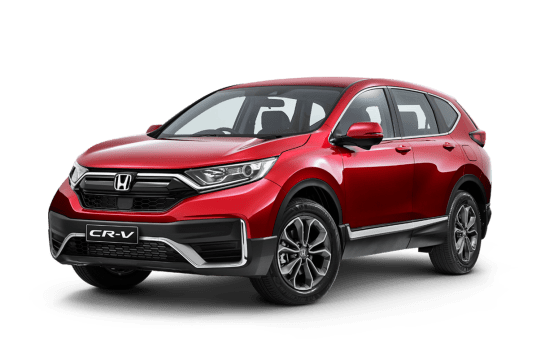
.jpg)
.jpg)







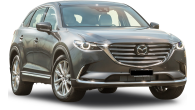




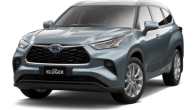



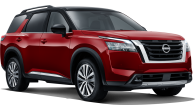

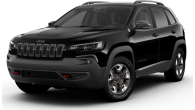





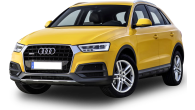




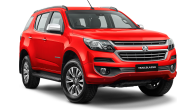


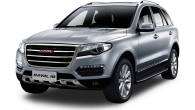



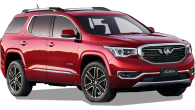
.png)

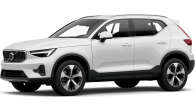


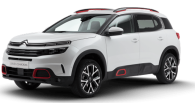



.png)


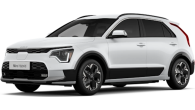
.jpg)

.jpg)
.jpg)
.jpg)
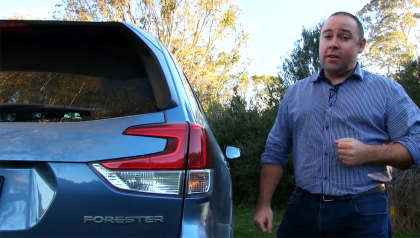
.jpg)
.jpg)

.jpg)
.jpg)

Comments